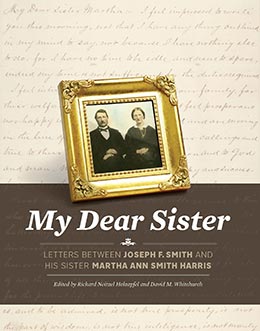Decade Introduction
Richard Neitzel Holzapfel and David M. Whitchurch, "Decade Introduction," in My Dear Sister: Letters Between Joseph F. Smith and His Sister Martha Ann Smith Harris, ed. Richard Neitzel Holzapfel and David M. Whitchurch (Religious Studies Center, Brigham Young University; Salt Lake City: Deseret Book, 2019), 89–110.
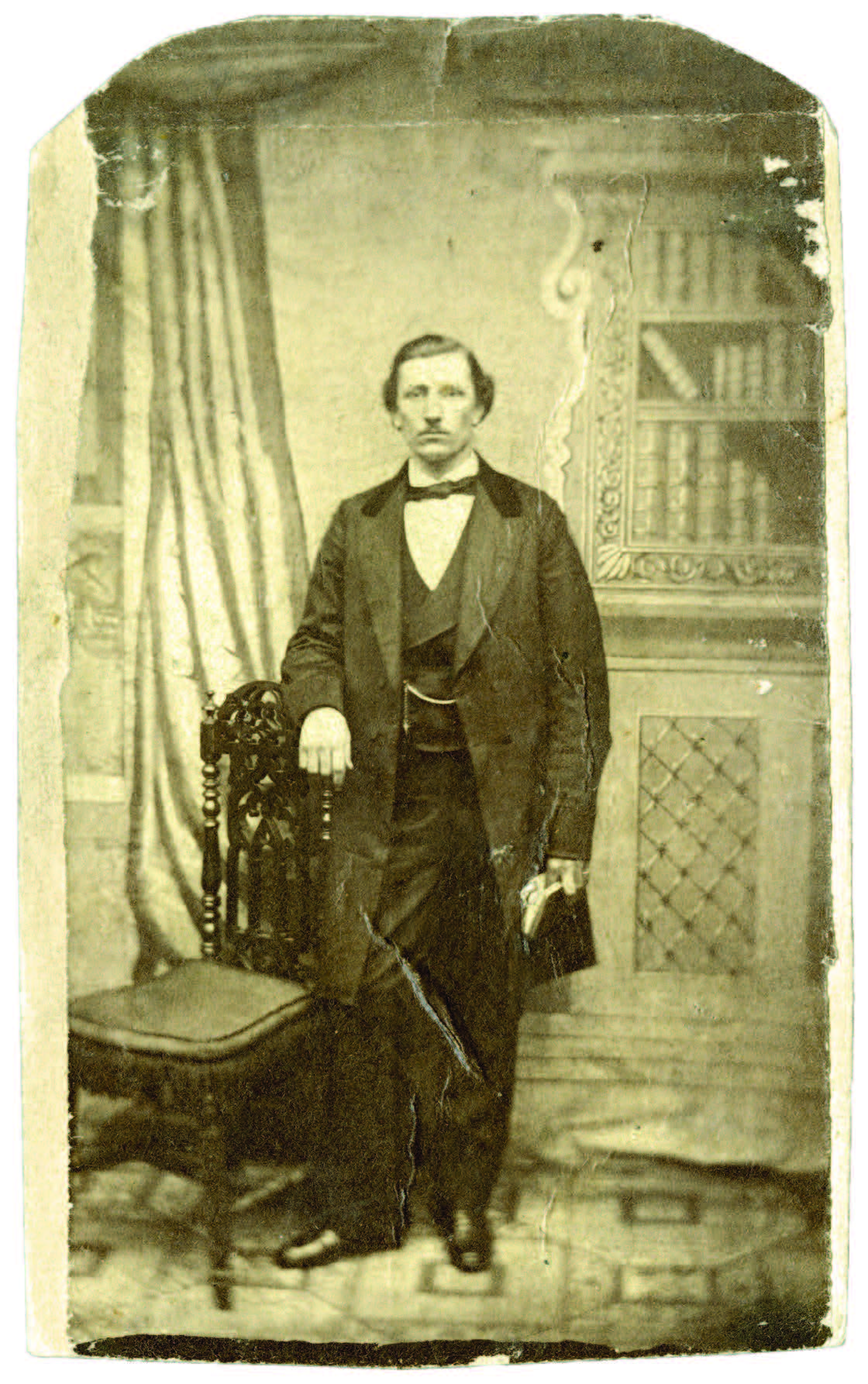 Joseph F. Smith in Liverpool, England, 1861. Joseph F. mentions having his “likeness taken” on several occasions during this mission (as in his 30 July 1860 journal entry). Courtesy of CHL
Joseph F. Smith in Liverpool, England, 1861. Joseph F. mentions having his “likeness taken” on several occasions during this mission (as in his 30 July 1860 journal entry). Courtesy of CHL
One year after his marriage to Levira Annette Clark (1842–88), Joseph F. was called in 1860 to serve a second mission, this time to the British Isles.[1] He departed Salt Lake City with Levira’s half brother, Joseph F.’s cousin Samuel H. B. Smith (1838–1914), on 27 April 1860, just two days before Levira’s eighteenth birthday. Joseph F. noted in his journal, “This day I baid my wife & numirous friends farewell, and started upon my mission to England.”[2] He, along with several other missionaries, traveled across the plains with a wagon train, apparently working as teamsters to pay their passage. They arrived in Florence, Douglas County, Nebraska, on 8 June 1860. There Joseph F. met his older half brother, John Smith, who had been visiting his Smith cousins (children of Emma Hales Smith and Joseph Smith Jr.) in Nauvoo and had stopped on his return trip to Utah to help his sister, Lovina Smith Walker (1827–76), and her family move to Salt Lake City.[3] For Joseph F., it had been fourteen years since he had seen his half sister.[4]
Joseph F.’s Visit to Nauvoo
From Florence, the missionaries continued on to Nauvoo, Hancock County, Illinois, arriving in late June. Returning to his boyhood home, Joseph F. recalled those days in a letter to Levira: “It looked as natural to me as tho’ I had lived there my life time. There stood our old Barn and Brick Office as they did 14 years ago. Uncle Joseph’s Big Brick store looked as it did when I saw it last, in fact I could pick out nearly every spot that I had known in Childhood.”[5]
Joseph F. noted in his journal, “Here we found cousins—Joseph, Fredrick, Allexander, and David, and Aunt Emma.”[6] The immediate family of the Prophet Joseph Smith (1805–44) remained in Illinois when the Saints left Nauvoo in 1846. They included Emma Hale Smith (1804–79)—the aunt of Joseph F. and Martha Ann and the widow of the Prophet—and her children Joseph Smith III (1832–1914), Frederick Granger William Smith (1836–62), Alexander Hale Smith (1838–1909), and David Hyrum Smith (1844–1904).[7]
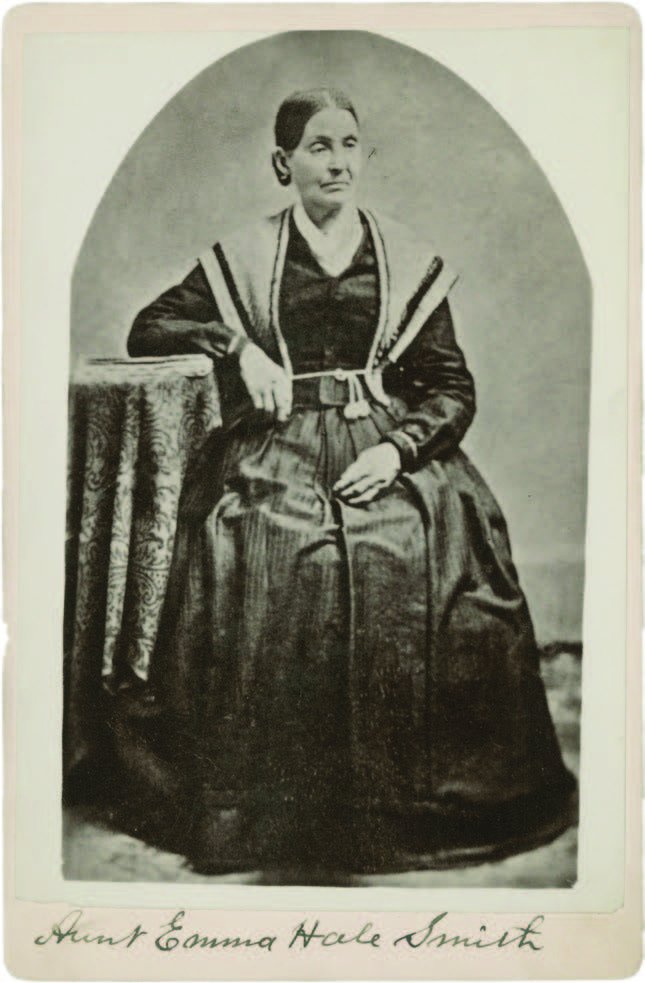 Emma Hale Smith, ca. 1870. Courtesy of CHL. This image is found in the Joseph F. Smith photograph collection. Included in that collection are images of Joseph Smith III and other family members who did not gather to Utah.
Emma Hale Smith, ca. 1870. Courtesy of CHL. This image is found in the Joseph F. Smith photograph collection. Included in that collection are images of Joseph Smith III and other family members who did not gather to Utah.
This joyful reunion was somewhat overshadowed by Joseph Smith III’s recent call to be the first prophet-president of the “New Organization,” or the Reorganized Church of Jesus Christ of Latter Day Saints (RLDS).[8] Espousing an alternative interpretation of the Restoration, the RLDS Church challenged the leadership of Brigham Young (1801–77) and the Twelve Apostles.
Although these cousins held differing opinions and interpretations of Church history, doctrine, and practice, Joseph F.’s visit with Joseph III was friendly. Joseph F. noted, “I think [Joseph III] felt unfeigned pleasure at seeing us.”[9] However, the goodwill and cordial disagreement between cousins did not last long. By the decade’s end, the doctrinal divides between Joseph F. and his cousins had widened and feelings had turned acrimonious as each defended his own interpretation of the past.
After their brief stop in Nauvoo, the missionaries continued east, allowing Joseph F. an opportunity to visit his aunts Sophronia Smith McCleary (1803–96) and Lucy Smith Milliken (1821–82) in nearby Colchester, McDonough County, Illinois.[10] The missionaries arrived in New York City on the Fourth of July[11] and soon thereafter boarded the Edinburgh, a ship bound for England.
The British Isles
Joseph F. and his companions arrived in Liverpool, Lancashire, England, on 27 July 1860.[12] As with his first mission to the Sandwich Islands, Joseph F. (still young at age twenty-one) encountered a new culture, diet, and social and religious world. His journal records his perceptions of the squalor in an industrial city shortly after his arrival: “This evening . . . we took a walk thro’ the principle thoroughfares of the town, and the sites we saw defy description. They were simply horrible!”[13] He also faced a variety of English dialects. Curiously, he undertook to learn sign language, noting in 1861, “Took a lesson in ‘deaf & dumb’ getting quite expert.”[14]
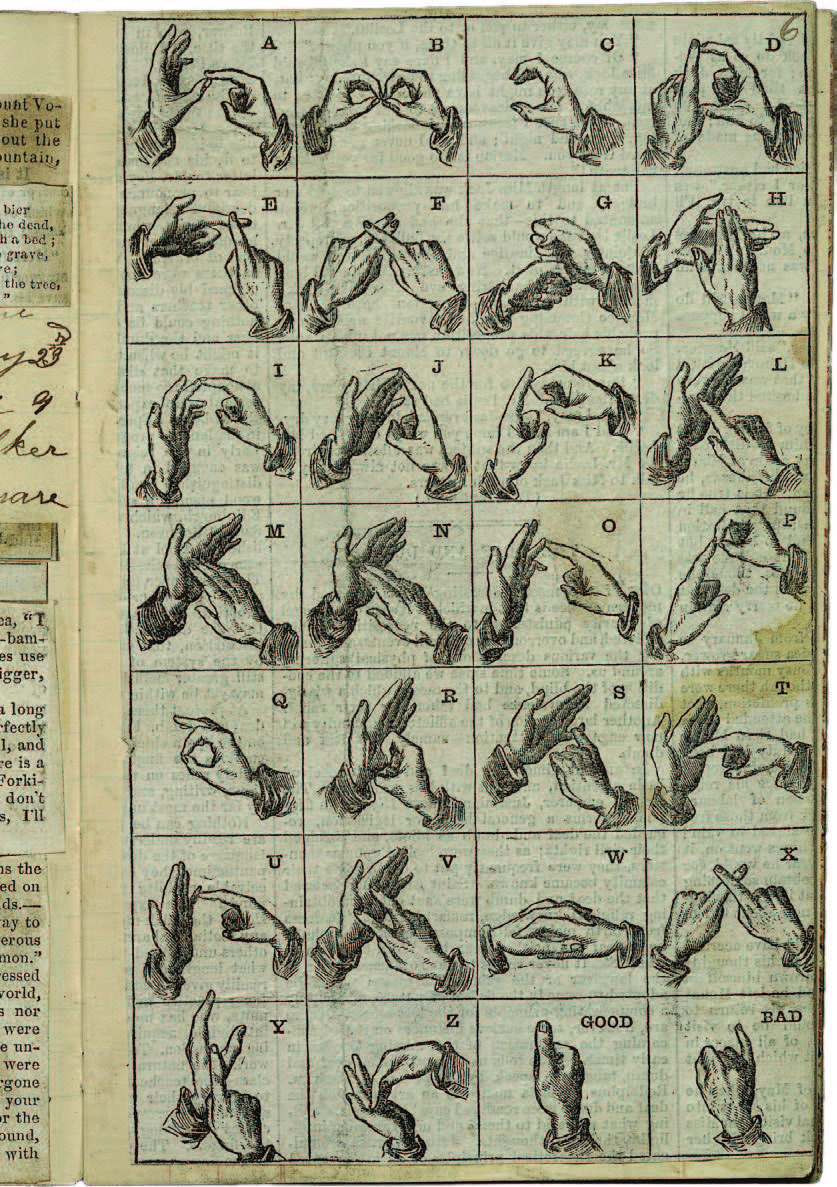 Joseph F. cut and pasted a sign language chart in his journal. Joseph F. Smith, journal, 27 April 1860 to 22 September 1860.
Joseph F. cut and pasted a sign language chart in his journal. Joseph F. Smith, journal, 27 April 1860 to 22 September 1860.
Certain habits that Joseph F. acquired during his first mission were conducive to his personal growth in Britain: keeping a journal; communicating with family, friends, associates, and Church leaders through numerous letters; practicing handwriting; making vocabulary lists; reading voraciously; visiting natural, cultural and historical sites; sending items home, including newspapers; and widening his circle of friends and associates. He always gave special attention to his wife Levira, his younger sister Martha Ann, and other Smith family members in Utah.
Joseph F. was always grateful to receive news from home and disappointed when he did not receive a letter. For example, he noted in his journal that he had not received a “letter from, Sarah [Smith Griffin] nor John [Smith] since I left home, and only one from Charlie [Charles Emerson Griffin]. I can hardly tell what has come over them but I suppose it’s all right— if so— why— all right— it is.”[15]
As before, Joseph F.’s mission to the British Isles provided him an opportunity to communicate with his sister and others through letters. In a record book of expenses for this particular mission, he noted an example of costs associated with his efforts to keep in touch with family and friends.[16]
It is fortunate that Joseph F. took care to record his efforts to communicate with others, because many of his letters from this period have not survived. His journal attests to the time-consuming efforts he expended in this regard. For example, one entry notes, “I mailed two parcels off of papers to Vira and Martha.”[21] Another entry records, “I wrote to Levira sent her some verses and my likeness, also Martha Ann.”[22] When the famous London Illustrated published drawings based on daguerreotypes taken in Salt Lake City, along with a balanced article about the Church, Joseph F. collected several copies and sent them home to family members. He noted in his journal, “Got the ‘Elustrated London News’ for Saturday 16th with a photograph of Br. Brigham, and his houses in G.S.L. City and a short history of his life since the Death of Joseph—very good.”[23] On the following day, he recorded, “Mailed 3 Nos. of the ‘London Journal’ and ‘Elustrated London News’ to Leveria . . . to Bro. William [Jasper] Harris.”[24]
Joseph F. often shared his activities with loved ones back home, especially Martha Ann, who he thought would likely never have the kind of experiences he was having serving missions across the world.
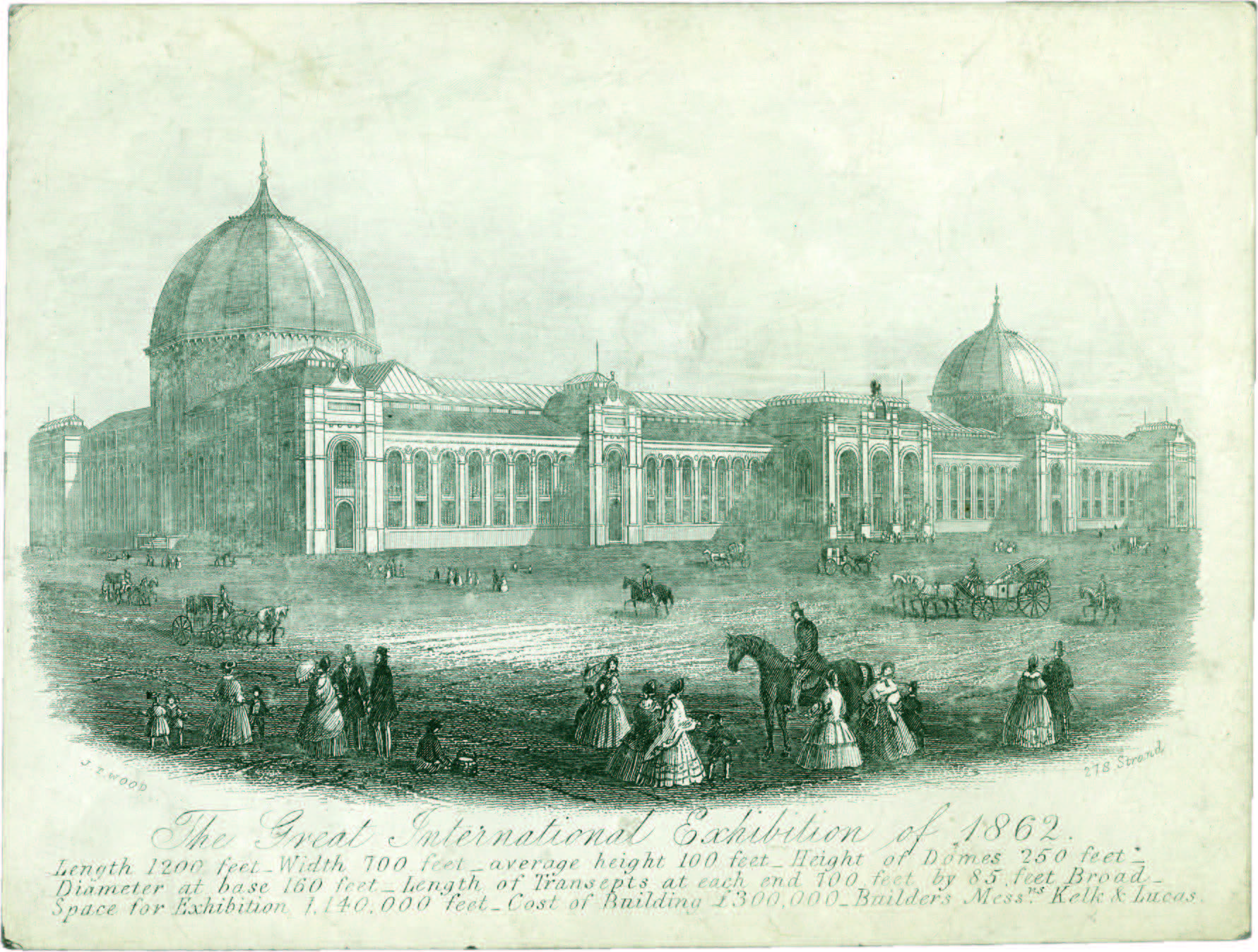 “The Great International Exhibition of 1862.” Joseph F. Collection. Courtesy of CHL. Joseph F. discusses this visit in a letter to Martha Ann, 10 April 1862.
“The Great International Exhibition of 1862.” Joseph F. Collection. Courtesy of CHL. Joseph F. discusses this visit in a letter to Martha Ann, 10 April 1862.
In an 1862 letter to Martha Ann, Joseph F. described the historical sites he visited in London and asked for her patience: “I do not wish to impase an good nature, So I will prescribe the limits of your portion to this remaining half sheet. Which I hope you will have patiance to read.”[25]
Joseph F.’s journals also contain insights into his personality. One such entry reads, “On awakening this morning I found my watch had stopped about the time I wound it up on going to bed. The hands standing at 11:15 minuets. I feel as if I had lost a friend!!!”[26] His letters could be similarly lighthearted. To Levira he wrote:
I think you would hardly know whether it was Joseph or not. Let me describe him as he sits. Here he is, hair “shinggaled,”[27] tall “stovepipe” hat, stiff collar, and in full English Style, all set and in full trim to go forth a regular English Mormon preacher! And in fact I must confess that I think myself with the rest of the boys appear very respectable, fair examples of the hail, hearty, rugged mountain boys of deseret. . . . We stand quite a show even if they did take us to be wilde beasts and monkeys when we first came.[28]
In letters home Joseph F. mentioned his plans to visit his extended Fielding relatives in “Ould England.”[29] Levira conveyed a message from Mercy Rachel Fielding Thompson (1807–93), Joseph F.’s aunt, suggesting that he visit Martha Ibbotson Fielding Watson (1803–72), who “could tell you all about the rest of the relitives and whare to find them.”[30]
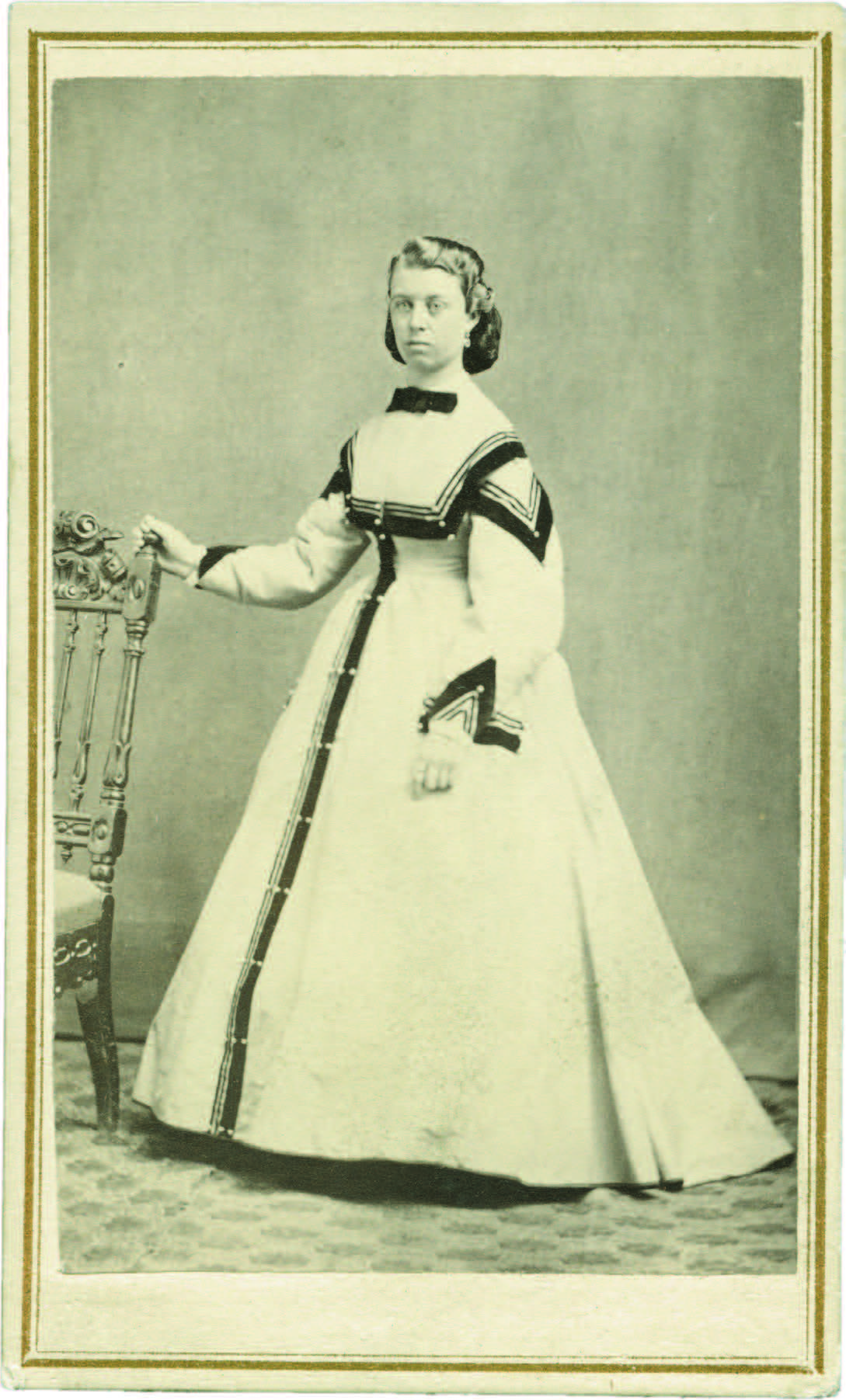 Levira Annette Clark Smith, ca.
Levira Annette Clark Smith, ca.
1867, photograph by Edward Martin, Salt Lake City, Utah. Joseph F. and Levira were married on 5 April 1859 and divorced on 9 July 1869. See Joseph F. to Martha Ann, 1 December 1868, herein. Courtesy of CHL.
As good fortune would have it, Joseph F. did meet some of his mother’s siblings, including his uncle James Fielding (1793–1877), a Methodist minister; another uncle, Thomas Fielding (1795–1882); his aunt Ann Fielding Matthews (1799–1884); and another aunt, Martha Ibbotson Fielding Watson (1803–72).[31] Both of these aunts were married to Methodist ministers. Joseph F. maintained contact with his aunt Martha Watson through a significant letter correspondence in the years that followed.
The British Mission was progressing in the early 1860s, and Joseph F. was seeing the fruits of his labors. He observed in a letter to William Jasper Harris, his brother-in-law, “We are prospering finely. We baptize frequently and only seldomly have to cut anyone off.”[32]
Leadership in Great Britain
Church leaders in the British Isles, like those in Hawai‘i, gave Joseph F. more and more responsibilities. He was appointed president of the Sheffield Conference, which included the cities of Barnsley, Doncaster, Rotherham, and Sheffield. The Millennial Star, the Church’s newspaper in the British Isles, reported, “The Sheffield Saints are warm-hearted and full of good works, under the Presidency of Joseph F. Smith, who though young is like a father to them. He is esteemed very highly by the Saints.”[33] During the fall of 1862, Joseph F. was also given a charge to supervise the emigration of hundreds of European Church members to Zion.[34]
It was during this mission that Joseph F. became better acquainted with George Q. Cannon (1827–1901), who helped open the Sandwich Islands Mission.[35] Cannon had recently been called to the Quorum of the Twelve Apostles and had been sent to England by President Brigham Young to preside over the British Mission, which also included administrative responsibilities for the European Mission.
In addition to performing his duties, Joseph F. decided to use sixty dollars to help a four-year-old orphan named Edward Arthur (1858–1911) make the journey to Utah. Edward lived in Utah with Joseph F.’s cousin Rachel Fielding Burton (1837–1914) until Joseph F. returned home in April 1863 and took Edward in as a member of his personal family.[36]
Return to Utah
Once he and his traveling companions arrived in New York on 6 July 1863, Joseph F. began arranging for the transit of Latter-day Saint emigrants to Florence, Douglas County, Nebraska, the staging ground for the trek west to Salt Lake City. His first duty in this assignment was to assist the Saints with whom he had traveled from England to America. He then awaited the arrival of other emigrant ships before making his way to Utah.
In New York Joseph F. stayed at the Stevens House, a hotel located at 25 Broadway, with John W. Young (1844–1924). There Joseph F. witnessed the draft riots[37] breaking out across the city as the US Civil War (1861–65) moved into its third year.[38]
On arriving in Salt Lake City in late September 1863, Joseph F. found Levira extremely ill and spent the next six weeks tending to her needs day and night.[39]
Another Mission to the Sandwich Islands
Five months after Joseph F. returned from England, President Young sent Apostles Ezra T. Benson (1811–69) and Lorenzo Snow (1814–1901) to Hawai’i to resolve a problem created by a Latter-day Saint convert named Walter Murray Gibson. Three former Sandwich Island missionaries—Joseph F. Smith (1838–1918), Alma L. Smith (1831–87), and William W. Cluff (1832–1915)—were sent to assist Benson and Snow.
It will be recalled that several years earlier, in the early spring of 1857, rumors had begun swirling about an impending showdown between the US government and the Church. Brigham Young had called for missionaries preaching abroad to return to Salt Lake City. In a matter of a few months, all of the Utah missionaries serving in Hawai’i had left the islands, with Joseph F. departing on October 6, 1857. Their absence had left the indigenous members exposed to the cunning designs of Walter Gibson, who had arrived in Hawai’i in 1861. Gibson had identified himself to the members as their newly appointed leader.
For nearly three years Gibson controlled the Church and its members by raising money through various means, including selling priesthood offices. When word finally reached Salt Lake City, Brigham Young dispatched Elders Benson and Snow, along with Joseph F. and two other former Hawaiian missionaries, to investigate and set matters right. They reached the islands on 27 March 1864.
Joseph F. described the scene on Lāna‘i to Levira in a letter home as one of “considerable pomp” but confessed he did “not find any fault with [the] arrangement” of organized meetings and classes for children. Ultimately, Gibson did not recognize the Apostles’ authority and was excommunicated.[40] When Gibson refused to reassign the property deeds to the Church, the Church lost six thousand acres on Lāna‘i.[41]
Following the Apostles’ departure, Joseph F. Smith remained for six months and worked with Elders Cluff and Smith as his assistants and with local members to reestablish order in the Church.[42] The task was daunting since membership—peaking at around four thousand during Joseph F.’s first mission—now stood at about five hundred. He led the effort to reorganize and revitalize the branches on the islands and to identify a new gathering place. Eventually, having made significant progress, Joseph F. departed on 12 October 1864 for Utah, having completed another mission assignment for the Church.
 Joseph F. Smith, ca. 1866, about the time he was ordained an Apostle. Courtesy of CHL.
Joseph F. Smith, ca. 1866, about the time he was ordained an Apostle. Courtesy of CHL.
Life in Utah and Ordination to the Apostleship
After returning from his second mission to the Sandwich Islands, Joseph F. was elected to the Utah Territorial House of Representatives and found employment at the Church Historian’s Office, where he worked under the supervision of his father’s cousin George A. Smith (1817–75), an Apostle and Church Historian. In addition to his work at the Church Historian’s Office, Joseph F. was also employed at the Endowment House as a recorder and served as an ordinance worker.
One of Joseph F.’s responsibilities at the Historian’s Office included keeping minutes of Brigham Young’s weekly prayer circle meetings. At the conclusion of one meeting on Sunday, 1 July 1866, President Young said: “Hold on, shall I do as I feel led? I always feel well to do as the Spirit constrains me. It is my mind to ordain Brother Joseph F. Smith to the Apostleship, and to be one of my counselors.”[43] After receiving approval of those present, including four members of the Twelve Apostles, the ordination proceeded: “We then offered up the signs of the Priesthood, after which Bro. Jos. F. Smith knelt upon the altar and taking off his cap, we laid our hands upon him. Bro. Brigham being mouth and we repeating after him in the usual form.” Joseph F. was twenty-seven.[44] Since there was no current vacancy in the Quorum of the Twelve at the time, President Young asked that the ordination remain confidential.[45]
Almost a year later, in preparation for being set apart as a member of the Twelve Apostles, Joseph F. recorded, “26 day of June 1867. I was re-baptized[46] in the font at the Endowment House and confirmed at the same time and place by Elder Geo. Q. Cannon.”[47]
Eventually the ordination was made public when, in the October 1867 general conference, Joseph F. was sustained as a member of the Quorum of the Twelve Apostles, filling the vacancy created by the apostasy of Amasa Lyman.[48] In October 1867 Joseph F. noted in his journal that he was “set apart in the upper room at the E. H. as one of the twelve Apostles” with Brigham Young as voice.[49]
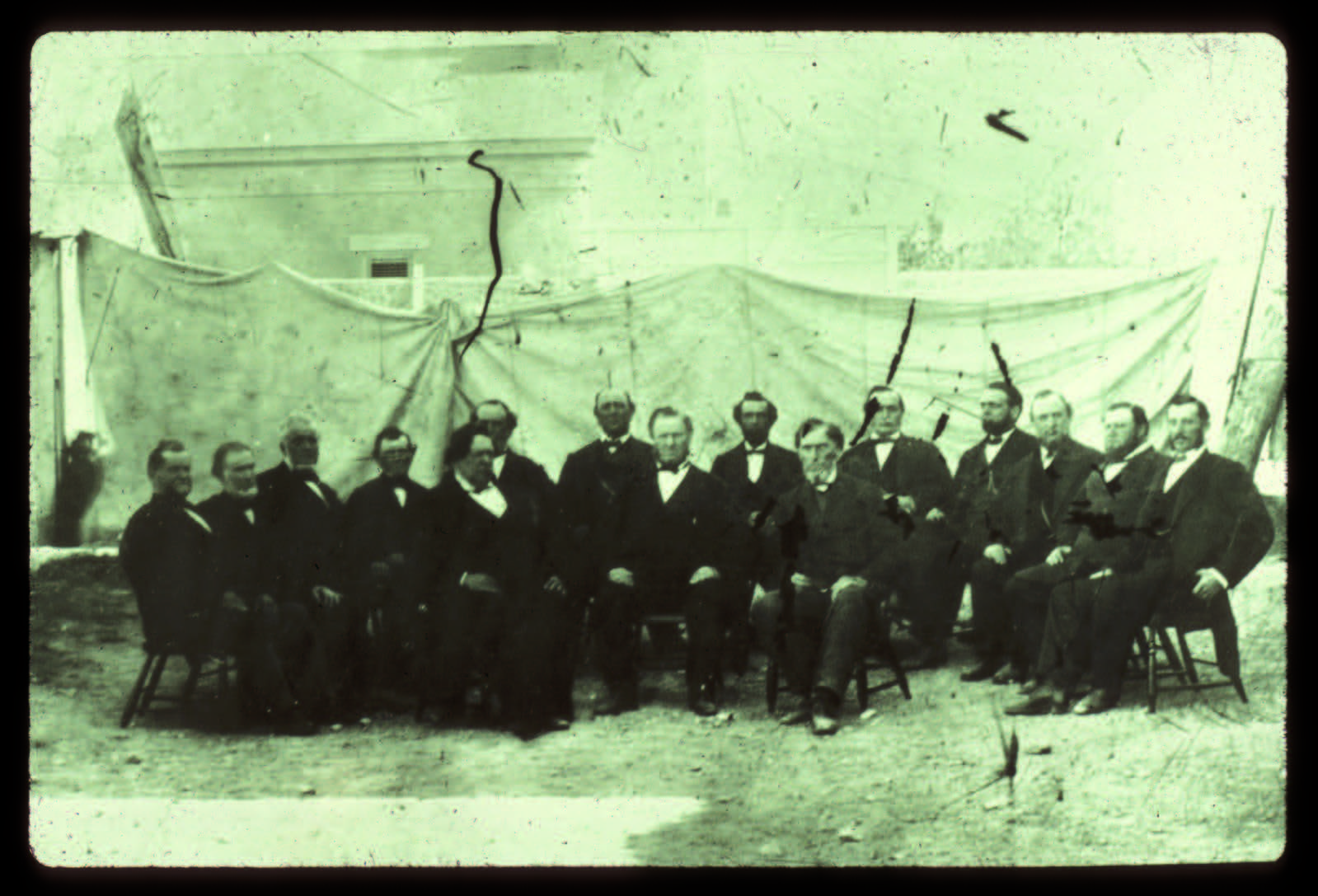 First Presidency and Quorum of the Twelve, 9 October 1869, photograph by C. R. Savage, Salt Lake City, Utah. Courtesy of USHS. The first photograph of the combined First Presidency and Quorum of the Twelve includes Joseph F. Smith on the far right.
First Presidency and Quorum of the Twelve, 9 October 1869, photograph by C. R. Savage, Salt Lake City, Utah. Courtesy of USHS. The first photograph of the combined First Presidency and Quorum of the Twelve includes Joseph F. Smith on the far right.
A Mission to Provo City
In oder to strengthen the Saints in Utah against those who hoped to separate members of the Church from their leaders, the First Presidency and Quorum of the Twelve Apostles made personal visits, preached the restored gospel of Jesus Christ during their visits, and appointed local leaders who would direct the spiritual and temporal work of building the kingdom of God in their appointed places.
As part of this effort, in February 1868 President Brigham Young traveled to Provo, a Latter-day Saint settlement about forty-five miles south of Salt Lake City. During this visit President Young said, “I am happy in the privilege [of] meeting with you. . . . As far as I am acquainted with the inhabitants of Provo I think they are as good a people as those who dwell in Salt Lake City or in any other settlement in Utah Territory. I think much of Provo; it is a very favored locality.”[50] However, Church leaders felt they could help resolve some of the issues facing the community. “While cogitating upon this matter,” President Young continued, “it came to me very forcibly to make a proposition for a few men to go to Provo and comfort the hearts of the brethren here, to show them the necessity of becoming one, of laying aside all individual bickerings, of overlooking and forgiving the weakness of one another, and of uniting our faith together to make this one of the most beautiful and lovely cities of Zion.”[51]
Brigham Young assigned former Salt Lake City mayor and businessman Abraham O. Smoot, Apostle Wilford Woodruff, Joseph F. Smith, and several others “to go to Provo and make homes there, and live there a portion of the time.” He promised the Saints “if the brethren of the city of Provo are willing for us to dictate and guide them, and make our homes with them, we will try to do them good, and teach them the ways of life and salvation, and show them how to overcome the darkness so natural to the human mind, and give them extended ideas on the building up of the kingdom of God on the earth.”[52]
A week later, President Young told an audience in Salt Lake City about his visit to Utah Valley, “There are good Saints in Provo, and they want to be better Saints; they may have committed errors, but when you arrive at the truth of the matter, they wish to be Saints.”[53]
Elder Ezra T. Benson (1811–69) updated fellow Apostle Franklin D. Richards (1821–99), who was directing the work in England at the time: “On Friday, Feb. 7, 1868, President Young, accompanied by Elders Heber C. Kimball, Wilford Woodruff, E. F. Sheets, Joseph F. Smith, A. O. Smoot and others, started for Provo. A great change has taken place in the administration of that locality. Brother A. O. Smoot is elected mayor of Provo, and presiding Bishop of the whole county; Wilford Woodruff, Joseph F. Smith, George Bywater, A. F. McDonald, and Daniel W. Cluff, City Councillors; E. F. Sheets, Wm. Miller, and Myron Tanner, Alderman. They report the spirit of the people in that region as very good.”[54]
Emily Harris Smoot, Martha Ann’s mother-in-law and a plural wife of Elder Smoot, was among the first of his families to move to Provo from Salt Lake City. Apparently William Jasper, Emily’s son, arrived in Provo with his wife Martha Ann and their five children[55] about the same time.
Joseph F. followed his sister and arrived in Utah County in mid-March, writing, “Provo, Wednesday, Mar. 11th 1868, last night, we moved into one of bro. Cluff’s houses, it took all day Tuesday to whitewash, and clean it. So that it was fit to stop in.”[56] To help supplement his income while away from Salt Lake City that year, Joseph F. worked for David Cluff in Provo.[57]
The following year, Joseph F. returned to Salt Lake City and resumed many of his duties, including those of a clerk, secretary, and recorder. In October 1869 he returned to Provo on assignment with Brigham Young and recorded, “Baby was unwell all night with a fevor. Left home this morning at 7. . . . reached Provo at 5.20 p.m. I felt low spirited when I left home this morning. Martha Ann and family well.”[58] On the following day, he noted, “Felt some better this morning. . . . visited Martha Ann and the [County] Fair.”[59]
Plural Marriage
Plural marriage had been privately practiced in the Church since the 1840s but was publicly announced as a practice in 1852 after it had become widely known in Utah. Despite negative reactions by people of other faiths and some members, Church leaders vigorously defended plural marriage.
Within a decade, the US federal government took its first step to curb the practice when Congress passed the Morrill Anti-Bigamy Act on 8 July 1862. Nevertheless, Church leaders viewed the practice of plural marriage as protected by the US Constitution’s religious freedom clause and continued teaching and practicing the principle.
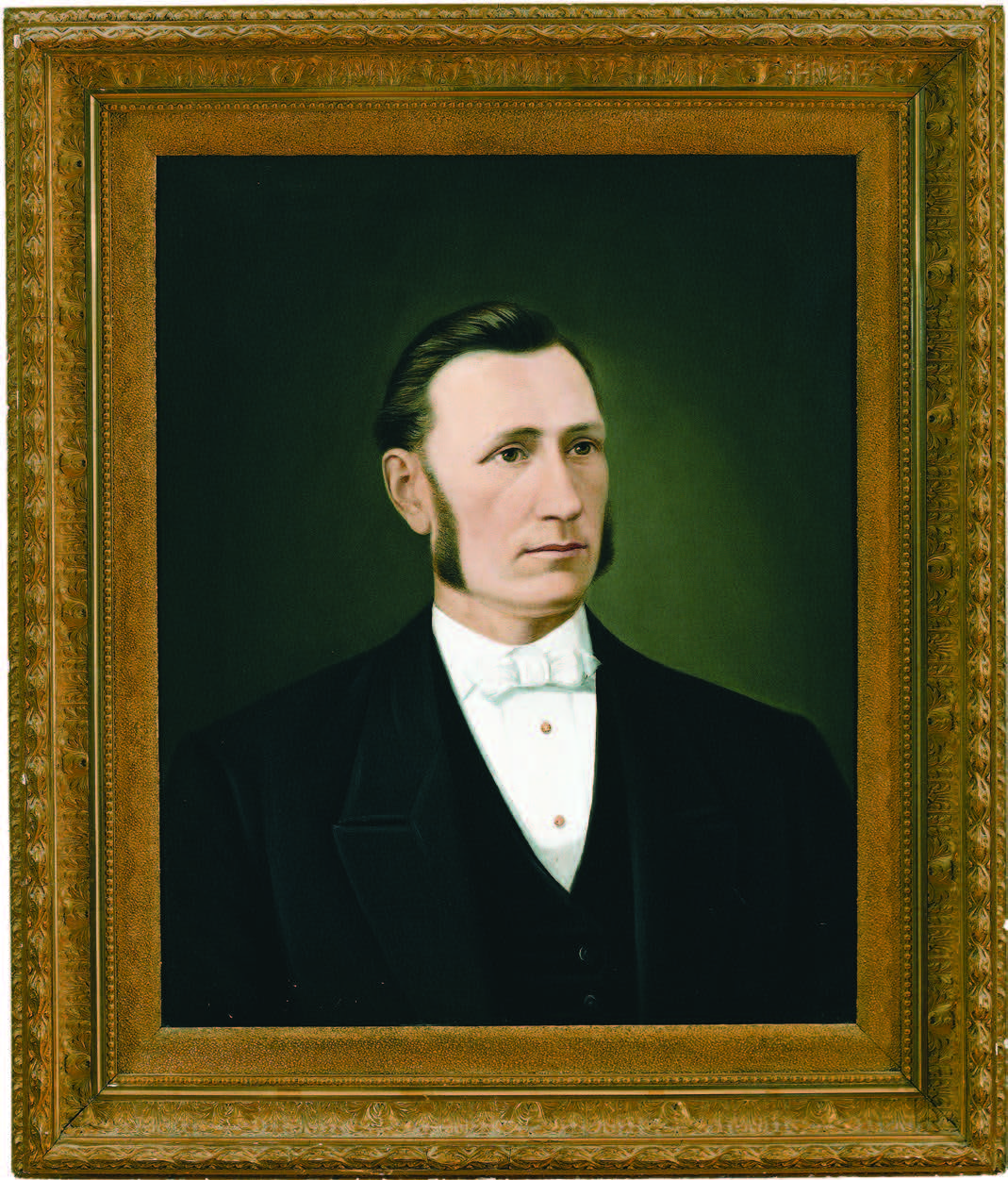
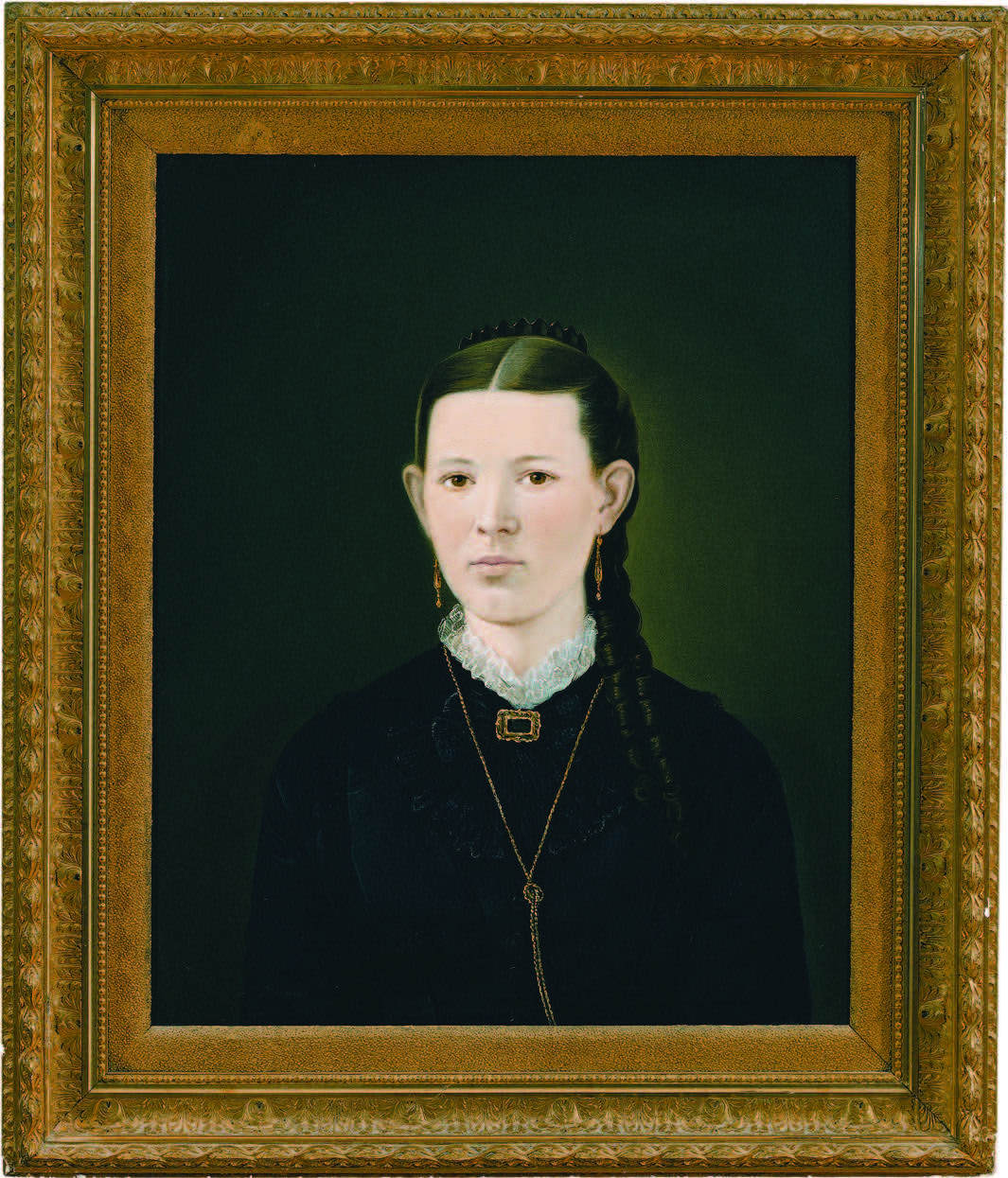 Joseph F. and Julia Lambson portraits, ca. late 1860s.
Joseph F. and Julia Lambson portraits, ca. late 1860s.
In the face of government efforts to stop plural marriage, Church leaders encouraged an increasing number of members to begin the practice, and those already living in plural families were urged to expand the practice. It appears that Brigham Young counseled Joseph F. to enter into plural marriage. In response to a letter from his cousin Samuel H. B. Smith inquiring about rumors that Joseph F. had entered into plural marriage, Joseph F. wrote that he “had no other object in view other than to obey counsel.”[60] Moreover, his plural wife Julina Lambson (1849–1936) recalled as much: “He had never paid any special attention to me, and I do not think that he had thought of getting another wife, but President Young advised him and he had told him a number of times, so he thought he should obey.” She also recalled that when her mother warned her not to expect a great deal of affection from a man who already had a wife he loved, she had replied, “Mother, I love him and if I am good, he will learn to love me. He is the only man I have ever seen that I could love as a husband.”[61]
 Joseph F. and Sarah Ellen Richards, ca. 1868. Courtesy of CHL.
Joseph F. and Sarah Ellen Richards, ca. 1868. Courtesy of CHL.
Two years later, Joseph F. was sealed to his third wife, Sarah Ellen Richards (1850–1915) on 1 March 1868.[62] Sarah Ellen was the daughter of Willard Richards (1804–54), a close associate of Joseph and Hyrum Smith and a counselor to Brigham Young in the First Presidency before his death.
Two children were born to Joseph F. during this period: Mercy Josephine, a daughter of Joseph F. and Julina born on 14 August 1867, and Sarah Ella, a daughter of Joseph F. and Sarah Ellen Kimball born on 5 February 1869.
A Tragedy
Joseph F.’s participation in plural marriage created additional burdens and tests, including additional strains in his first marriage with Levira. Although entering into a plural marriage may not have been the main cause of the dissolution of his marriage to Levira, taking a second wife in 1866 seems to have exacerbated what was apparently an increasingly challenging and volatile relationship. It appears that Levira’s mental state had been deteriorating and that she may have suffered from a major depressive disorder, which is mentioned in the letters as an “an<y>xity of mind.”[63]
By December 1868, nine months after Joseph F.’s third marriage, Levira brought legal action against him, suing for divorce in a California court.[64] One factor in the dissolution of the marriage besides plural marriage was Joseph F.’s long absences from home. He recorded in his journal, “4 years today since I was married 3 of which time I have been from home.”[65] It is also evident that his temper and his personal failures as a young, inexperienced husband played a role.[66] Another factor was the pressure from Levira’s extended family in California to leave her husband, the Church, and Utah. Levira was also disappointed in not having children after eight years of marriage.
Given Joseph F.’s personal struggle to “guard” his temper and his tendency to be “too quick to resent a wrong,” one historian remarks that Joseph F.’s management of his increasingly challenging relationship with Levira “was a herculean effort, emotionally and physically.”[67] The end of that marriage was certainly one of Joseph F.’s lifelong regrets. Even though he went on to establish five successful family relationships thereafter, the dissolution of his marriage to Levira was a tragedy for a man who was committed to the Church’s teachings on the essential role of family. Subsequently Joseph F. rarely talked about Levira.
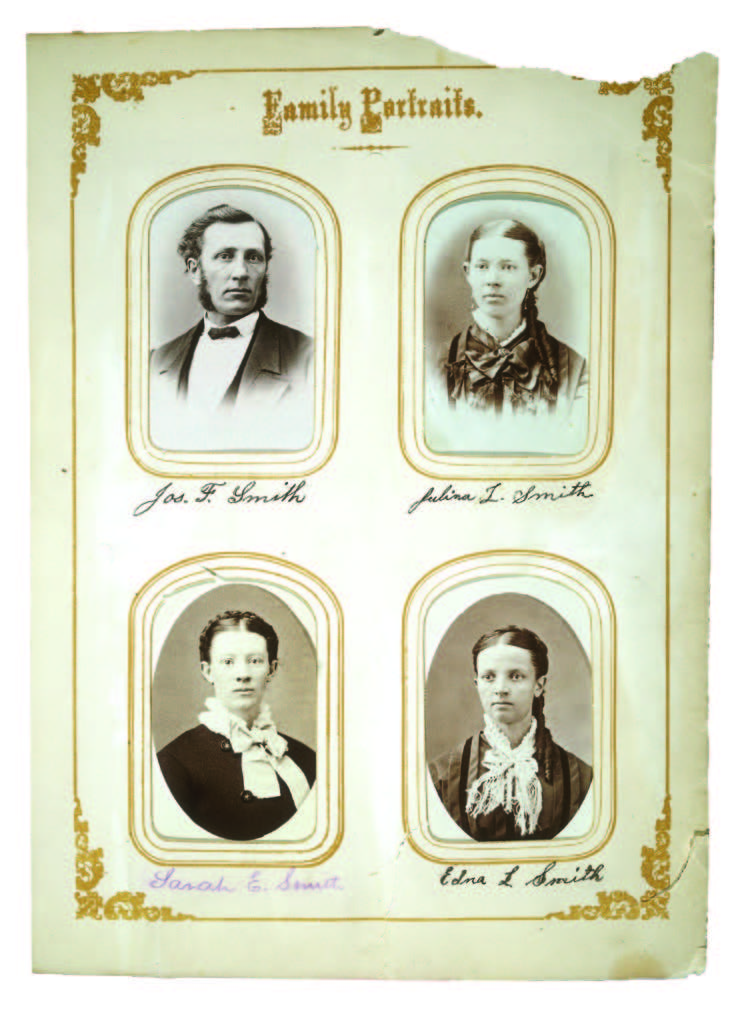 Joseph F. Smith, Julina Lambson, Sarah Ellen Richards, and Edna Lambson, ca. 1860s–70s. Courtesy of Mary Lou Walker. Typical of many large family Bibles, Joseph F.’s Bible had a section for family photographs.
Joseph F. Smith, Julina Lambson, Sarah Ellen Richards, and Edna Lambson, ca. 1860s–70s. Courtesy of Mary Lou Walker. Typical of many large family Bibles, Joseph F.’s Bible had a section for family photographs.
Another Tragedy
In addition to ending his relationship with Levira, Joseph F. experienced another heartbreak when his daughter Sarah Ella died on 11 February 1869, shortly after birth.[68] A funeral was held at 2:00 p.m. the following day at the “Homestead,” the name of the Smith family home located at First North between Second and Third West.[69] Little Sarah Ella was buried next to Mary Fielding Smith, her grandmother, in the Salt Lake City Cemetery.[70]
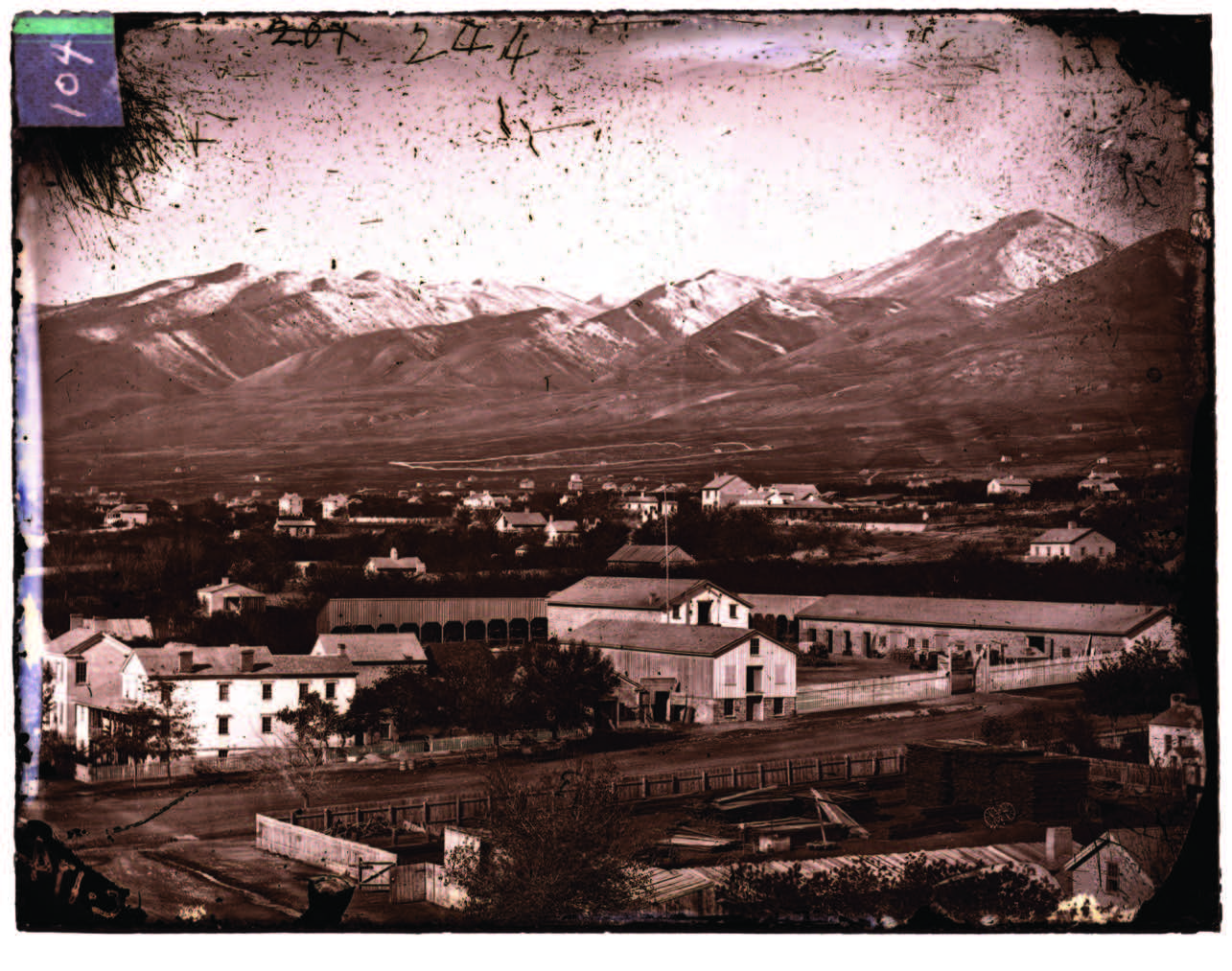 View of Salt Lake City Cemetery, located northeast of the city, 1868, photograph by Charles W. Carter, Salt Lake City, Utah. Courtesy of CHL. The Wells Fargo Stable is seen in the foreground with the white fence that enclosed the cemetery clearly visible in the background on the bench above the buildings.
View of Salt Lake City Cemetery, located northeast of the city, 1868, photograph by Charles W. Carter, Salt Lake City, Utah. Courtesy of CHL. The Wells Fargo Stable is seen in the foreground with the white fence that enclosed the cemetery clearly visible in the background on the bench above the buildings.
Strained Relationship with Smith Family Relatives
During the second half of the 1860s, Joseph F. defended the Church against attacks by his cousins, the sons of Joseph Smith Jr. and Emma Hale Smith. Alexander Hale Smith and David Hyrum Smith had come to Utah as missionaries for the RLDS Church. Joseph F. reported in a letter to Martha Ann that they were “on their way out here to preach against polygamy and convert the Brighamit’s.”[71]
The cousins’ relationship grew strained in a public meeting when Alexander denounced Brigham Young and plural marriage and Joseph F., now an Apostle and an influential member of Hyrum Smith’s family, stood and firmly defended Young’s succession to the Presidency and the Church’s practice of plural marriage.[72] An RLDS missionary in attendance reported to Joseph Smith III what happened next in the exchange. “After he [Joseph F.] sat down Bro. Alexander followed him and gave him one of the worst castigations that I ever saw any person receive.”[73] The public war of words had begun, and during this first decade of interaction between the two churches, there appeared to be no way to heal the divide.
As his letters to Martha Ann indicate, Joseph F. felt that his two cousins, “however much we may love them and pray for their good,” were in “the clutches of vile apostates” and were being influenced by the same spirit that led mobs to murder their father and uncle.[74] After bidding them goodbye, Joseph F. noted that they had “treated me very coldly” and had “lied about me to boot.”[75] The two Smith brothers had hoped to persuade many of the Utah Saints to see the error of their ways and to unite them with the “purified” form of belief and practice.[76] Much to their disappointment, however, Alexander and David’s visit had little impact on the Saints in Utah.[77]
The decade ended with both families vigorously and passionately attempting to define the legacies of their martyred forebears.
Martha Ann’s Growing Family
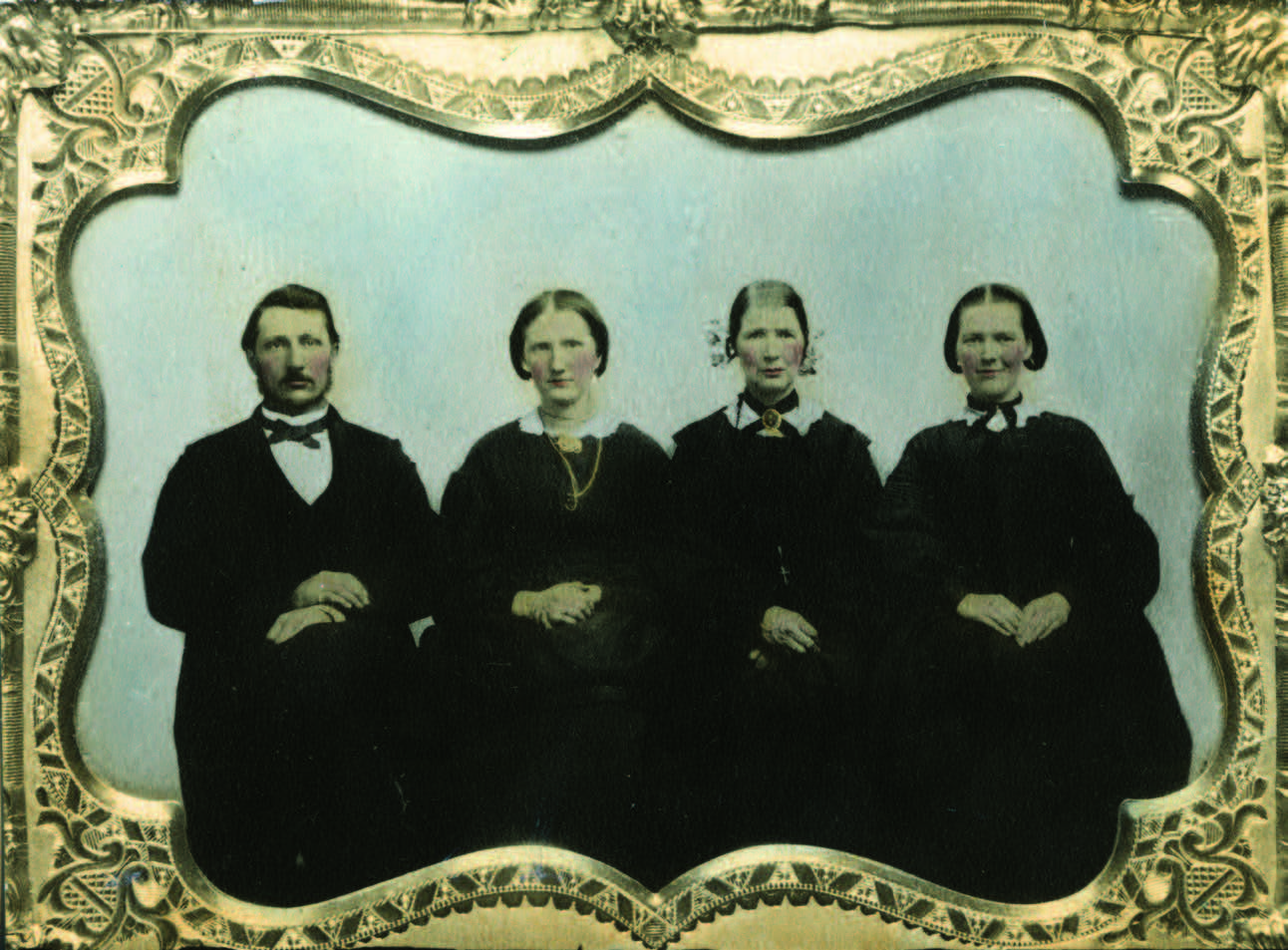 Joseph F. Smith, Martha Ann Smith Harris, Mercy Rachel Fielding Thompson, and Mary Jane Thompson Taylor, ca. 1868. Courtesy of Carole Call King.
Joseph F. Smith, Martha Ann Smith Harris, Mercy Rachel Fielding Thompson, and Mary Jane Thompson Taylor, ca. 1868. Courtesy of Carole Call King.
Martha’s husband William completed his mission to England in 1858. In the ensuing decade, Martha Ann gave birth to four children: Joseph Albert (1861–1911) in Provo, Hyrum Smith (1863–1924) in Salt Lake City, Mary Emily (1865–1947) in Salt Lake City, and Franklin Hill (1867–1947) in Salt Lake City. Joseph F.’s journals are filled with references concerning Martha Ann’s family. Three such entries appear below, the first two referring to the birth of Joseph Albert.
6 October 1861: “This morning I received a letter from Mary Jane Taylor and Sister Randall. Good news. All are well. Martha An has another Boy they call him Joseph.”[78]
21 October 1861: “Came to Sheffield by the first Train found a letter awaiting me from Bro. William Harris grand news from home. Martha Ann has another fine Son.”[79]
26 October 1861: “I mailed my Letter to William Harris.”[80]
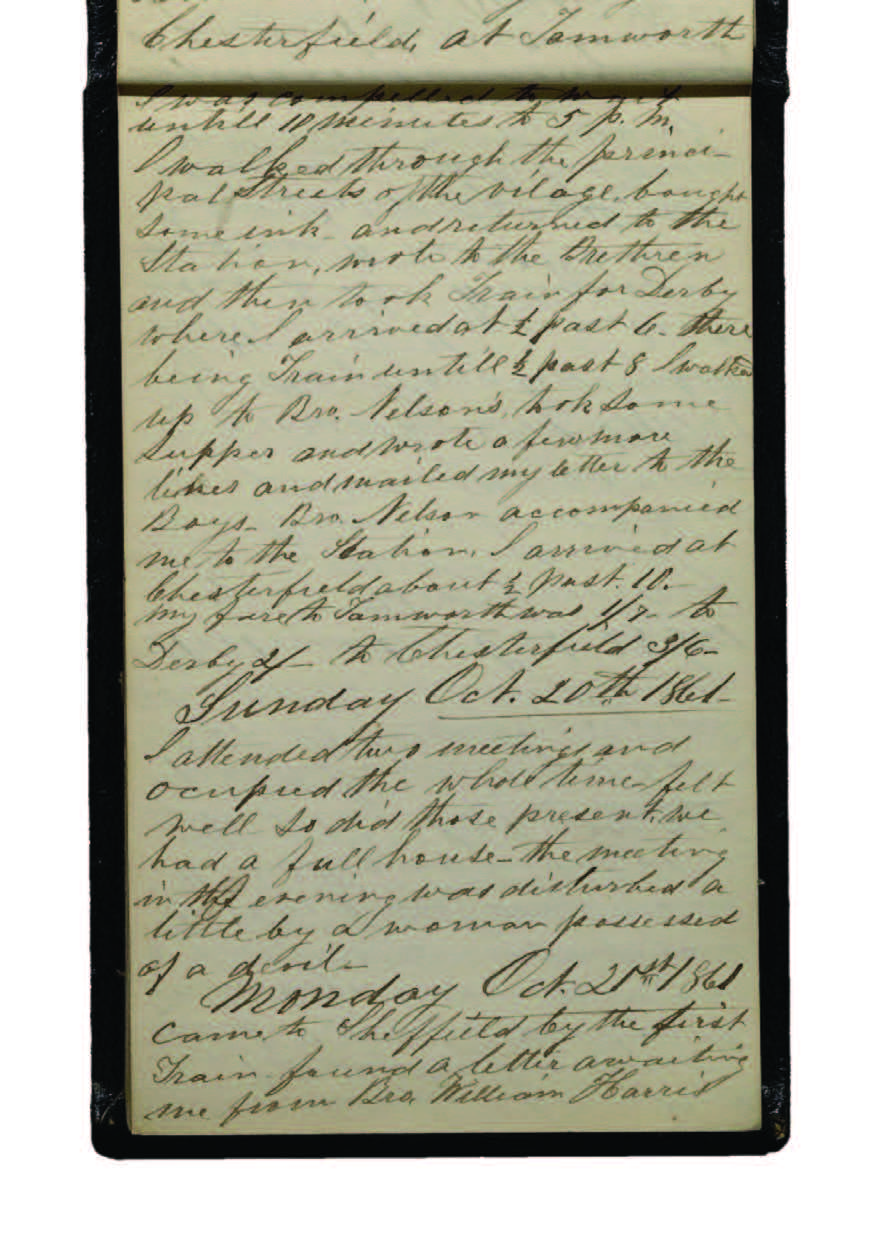
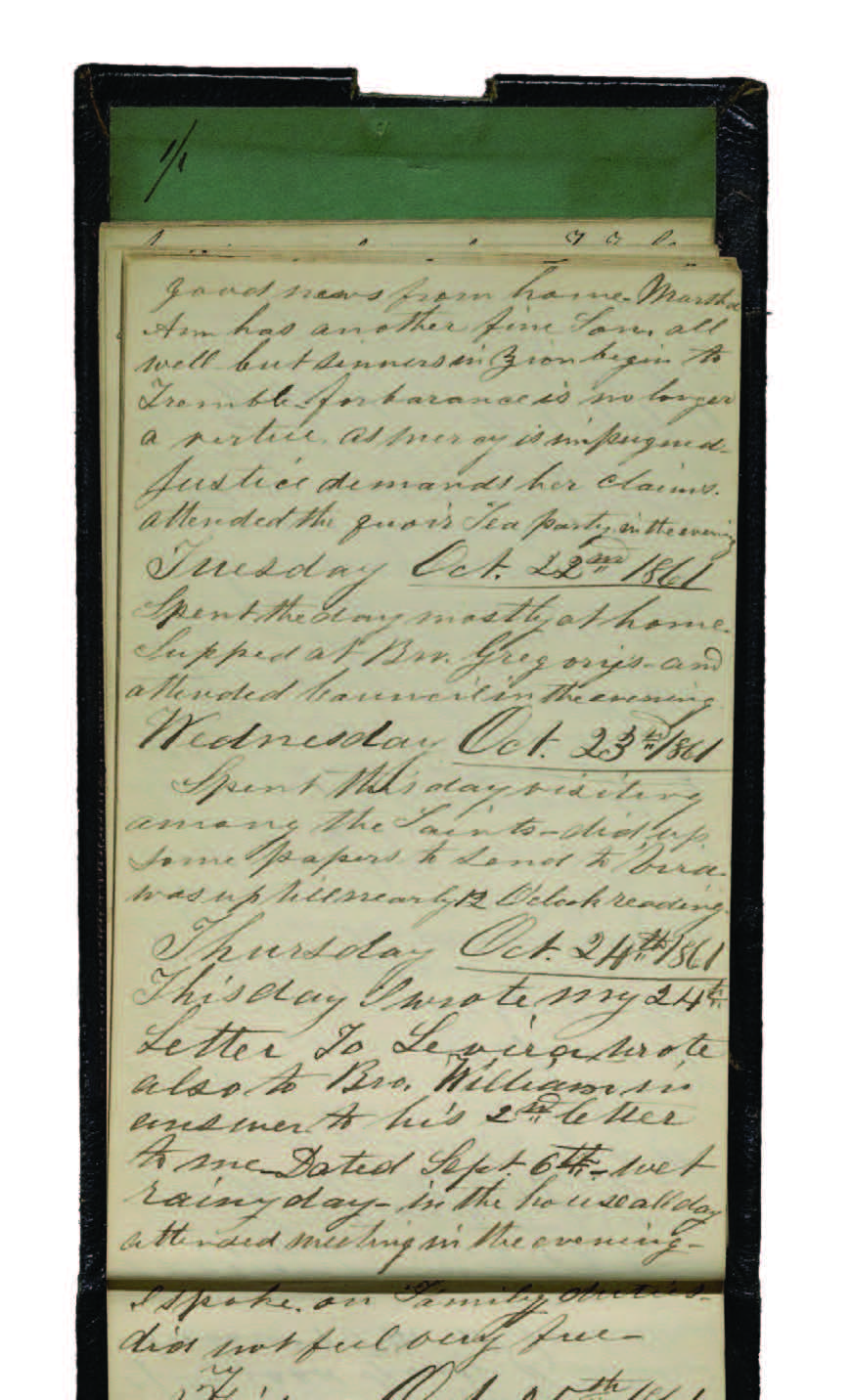 Joseph F.’s journal entry for 21 October 1861. Courtesy of CHL. He mentions receiving a letter from his brother-in-law, William Jasper Harris, announcing the birth of Martha Ann’s second child, Joseph Albert Harris, who was born on 19 August 1861.
Joseph F.’s journal entry for 21 October 1861. Courtesy of CHL. He mentions receiving a letter from his brother-in-law, William Jasper Harris, announcing the birth of Martha Ann’s second child, Joseph Albert Harris, who was born on 19 August 1861.
In one of his account books six years later, he noted the birth of another nephew: “1867. Wednesday. Sep. 11—Martha Ann gave birth to a fine boy—weighing 10 lbs. and 14 oz. 5.58. a.m.”[81]
Always keen to support his sister, Joseph F. took an opportunity to remind William Jasper that Martha Ann was a “faithful and affectionate” wife:
Your much desired, welcome and interesting letter of Sept 6th came duly to hand last Saturday. It was about one month and 13 days on the way. If this makes the trip as readily, it will reach you about the 1st of December or at Christmas. So trusting its lucky God will guard and guide it. I will suppose you to receive it then and will say, when you are surrounded by merriment and real enjoyment, engaged in the merry dance, perhaps and above all, at your own fireside with little joseph on your knee, and prattling Willie by your side with faithful and affectionate Martha at your elbow preparing delicacies for the usual Christmas enjoyments.[82]
William Jasper provided for his family during this decade by working at a number of different jobs, including stints as a police officer[83] and as a freighter moving goods from Salt Lake City to forts and communities along the Salmon River in Idaho. He also served for three months in the Black Hawk War (1865–72) as second lieutenant in Heber C. Kimball’s company.[84] In 1867 William Jasper was listed in the Salt Lake City directory as living within the Sixteenth Ward boundary: “Harris Wm. Policeman, res 16th wd, w s 2nd W Bet 1st N and N Temple.”[85]
Martha Ann, like most other pioneer women, played a significant role in the family economy. One such contribution was sewing gloves, a skill she learned in Salt Lake City after paying for a six-week course. Martha Ann’s children remembered that after her move to Utah County, she purchased buckskin (deer hides) and beaver furs from Native Americans, who often visited Provo to engage in trading. Sometimes she prepared the hides herself, but she often hired that work out to Provo Woolen Mills,[86] especially for her finer gloves. Martha Ann was able to make forty to fifty pairs per year, selling them for as much as seven dollars each.
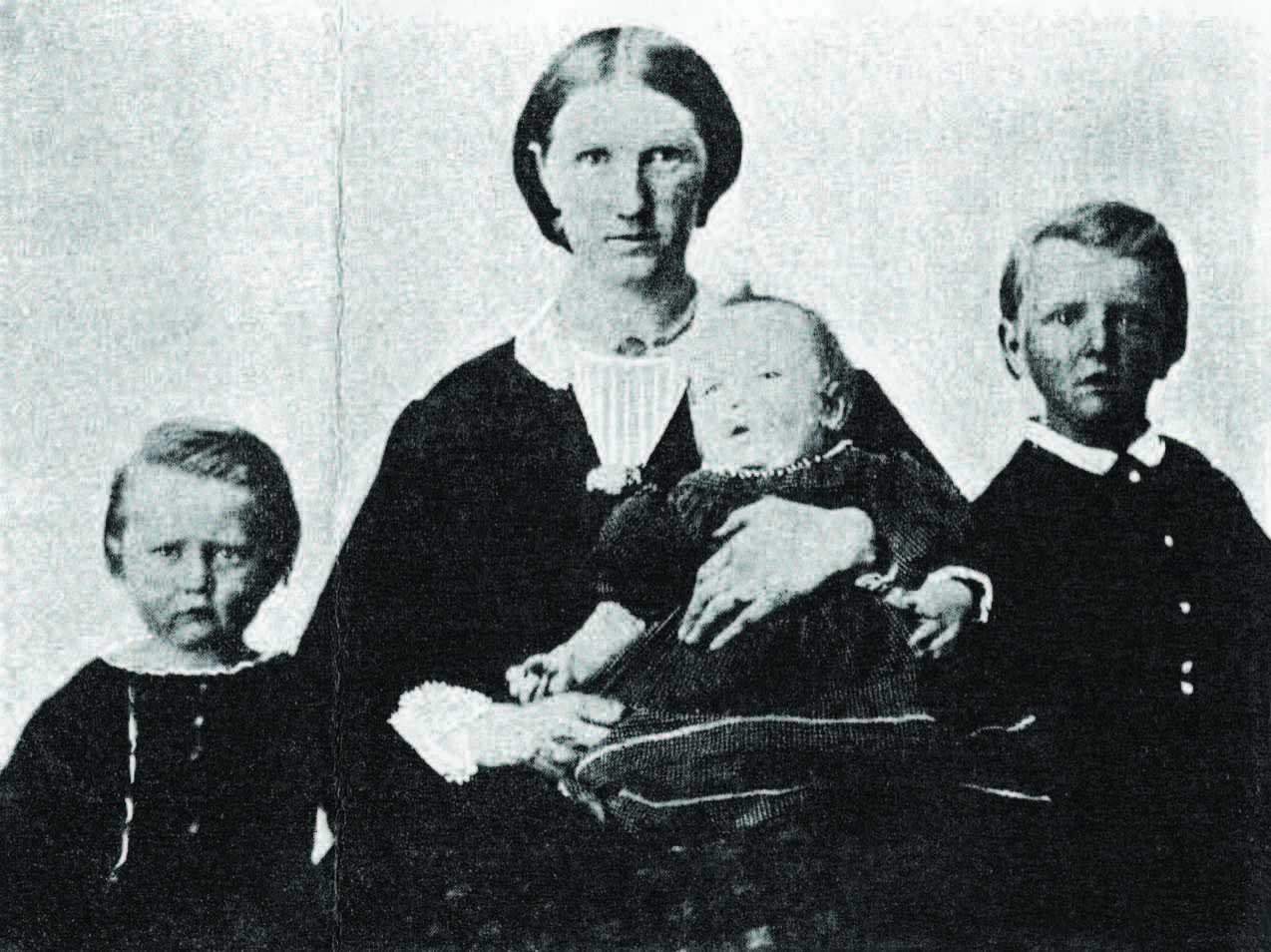 Joseph Albert, Martha Ann (holding Hyrum), and William Jr., summer 1864. See the letter herein from Martha Ann to Joseph F., July 1864. Courtesy of Carole Call King.
Joseph Albert, Martha Ann (holding Hyrum), and William Jr., summer 1864. See the letter herein from Martha Ann to Joseph F., July 1864. Courtesy of Carole Call King.
New Home and Family Challenges
William and Martha Ann moved to Provo sometime after the birth of young Franklin Hill.[87] They and their five children settled into a two-room adobe home owned by William’s stepfather, A. O. Smoot, located on the southwest corner of Second South and Third West. After their arrival in Utah Valley, William Jasper participated in discovering the Mammoth Mine in the Tintic Mining District in Juab County. He and his sons mined there, among other locations, for many years without any significant success.
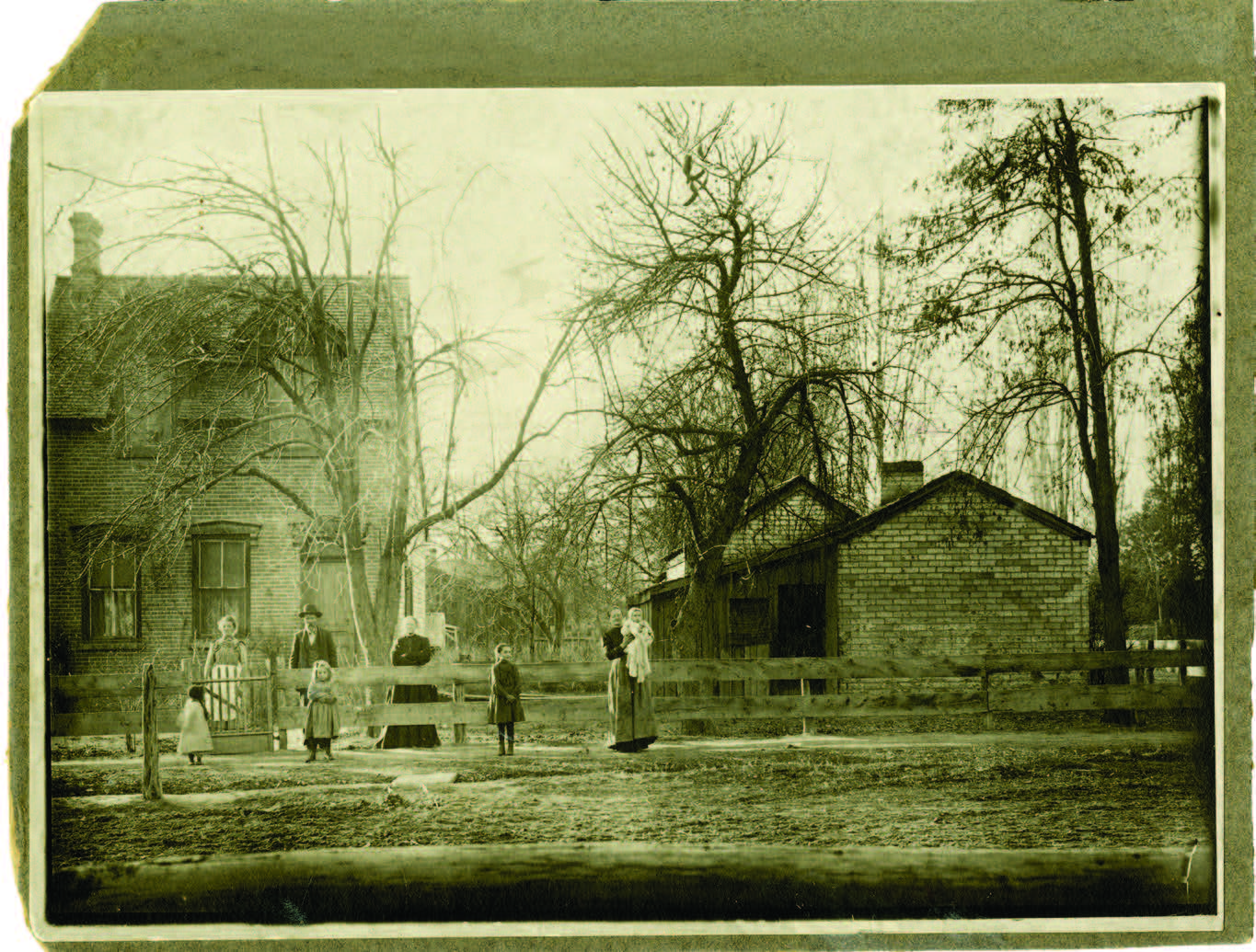 Homes of William Jasper and Martha Ann Smith Harris on the southwest corner of Second South and Third West in Provo, Utah County, Utah Territory, ca. 1895. Left to right (adults): Sarah, William Jasper, Martha Ann, Zina holding baby. Courtesy of David and Ruth Harris. Their first home in Provo was the adobe structure on the right. They eventually built a larger home in about 1890 on the left. Although substantially remodeled, the second home still stands today at 214 South 300 West in Provo.
Homes of William Jasper and Martha Ann Smith Harris on the southwest corner of Second South and Third West in Provo, Utah County, Utah Territory, ca. 1895. Left to right (adults): Sarah, William Jasper, Martha Ann, Zina holding baby. Courtesy of David and Ruth Harris. Their first home in Provo was the adobe structure on the right. They eventually built a larger home in about 1890 on the left. Although substantially remodeled, the second home still stands today at 214 South 300 West in Provo.
Martha Ann experienced poor health during much of the 1860s. This was particularly hard for her young family when William Jasper was away from home for long periods of time. On one such journey, William Jasper wrote to Martha Ann, “I assure you that I will come Just as soon as I can for I feel uneasy about you and am afraid you are not well and I know how scantily you are provided for food and I realize how good & patient you are and our dear little ones are content with what we set before them God bless you and them and keep you from sickness my thoughts day and night is how I can better our condition.”[88]
William Jasper worked hard to provide for his family, and his letters to his wife show fatherly concern for his children and the well-being of Martha Ann. For example, in August 1869 he advised his wife to have their children vaccinated against a smallpox outbreak that occurred in Jordan, Salt Lake County, Utah. To the children he wrote, “Willie and Jody and Hyrum be good boys and minde Ma help her and tend to your pig and cut wood and don’t run away and get in the watter and Mary be a good girl and Frank if you ain’t a good boy Pa will attend to you when he comes home.”[89]
Summary
By December 1869, Joseph F. was thirty-one years old, married to Julina Lambson and Sarah Ellen Richards, and the father of three living children and one adopted son, Edward Arthur. Joseph F. and Sarah Ellen had buried an infant, Sarah Ella, who died only days after her birth in February 1869. He and his families lived in Salt Lake City in a single-family dwelling known as the “Homestead.”
Martha Ann was twenty-eight years old at the end of the decade. She and William Jasper were the parents of five living children. The family resided in Provo and established roots in this frontier community that lasted until they died.[90]
Joseph F.’s journal during the 1860s reveals a remarkable and prodigious correspondence effort. For example, he noted in 1862, “I wrote to President Kimball, and, also, a letter of 12 pages to Uncle Fielding, Aunt Hannah Fielding, Aunt Thompson, Mary Jane Taylor, and Martha Ann Harris. Descriptive of my visit to my relatives at Preston, Also mailed 6 nos. of the ‘Star’ with a drawing of the Great International Exibition building to Leavira.”[91]
Interestingly, no envelopes from this decade have survived. Additionally, no letters between Joseph F. and Martha Ann exist for the period September 1864–May 1868, inclusive. One partial explanation may be that Joseph F. did not serve a mission during this period, making it easier for them to communicate in person.
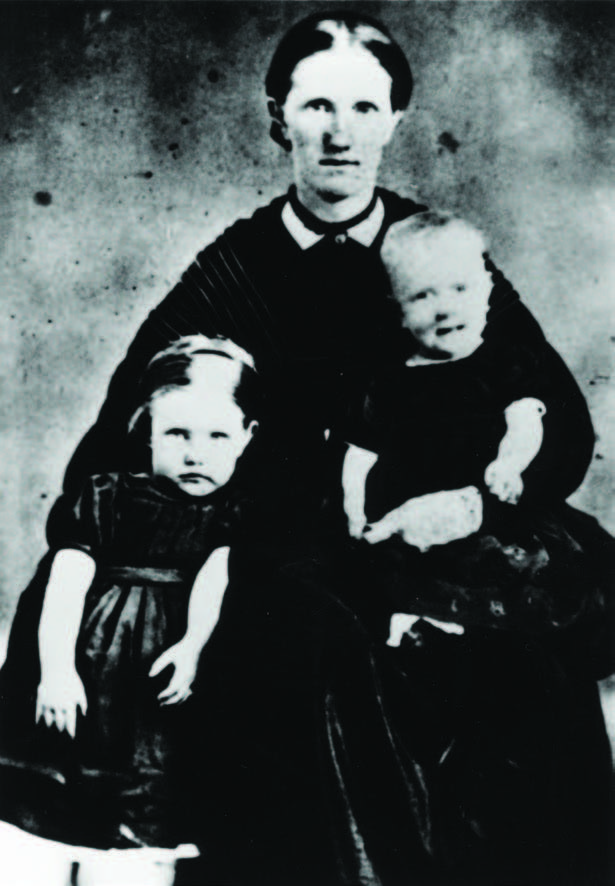 Mary Emily, Martha Ann, and Franklin Hill Harris, ca.1868. Courtesy of Carole Call King.
Mary Emily, Martha Ann, and Franklin Hill Harris, ca.1868. Courtesy of Carole Call King.
Though their individual and family responsibilities changed, Joseph F. and Martha Ann continued to express their love and support for each other through the letters written between them during the 1860s. Since Joseph F.’s responsibilities were often focused on the public affairs of the time, some of his letters to Martha Ann provide a window into the political, social, and religious affairs of the period. In contrast, Martha Ann’s responsibilities were almost exclusively focused on her family and home life and, as might be expected, her letters provide a remarkable window into pioneer life on the Latter-day Saint frontier.
Notes
[1] Levira was the daughter of Samuel Harrison Smith and his second wife, Levira Clark; Samuel and Levira had two additional children, but both died at the time of birth in 1841 and 1843.
[2] Joseph F., journal, 27 April 1860.
[3] Lovina Smith Walker was the oldest child of Hyrum Smith and Jerusha Barden. She and her family left Florence one week after Joseph F.’s visit. Her brother, John Smith, was appointed company leader responsible for 359 people making the trek to Salt Lake City. See biographical register, “Walker, Lovina Smith.” For details of John Smith’s reunion with his cousins, see Buddy Youngreen, “Sons of the Martyrs’ Nauvoo Reunion—1860,” BYU Studies 20, no. 4 (Summer 1980): 351–70.
[4] Joseph F., journal, 27 April 1860.
[5] Joseph F. to Levira, 28 June 1860.
[6] Joseph F., journal, April 1860, [4].
[7] See Youngreen, “Sons of the Martyrs’ Nauvoo Reunion,” 351–70.
[8] Known today as the Community of Christ, with headquarters in Independence, Jackson County, Missouri.
[9] Hyrum M. Smith III and Scott G. Kenney, comps., From Prophet to Son: Advice of Joseph F. Smith to His Missionary Sons (Salt Lake City, UT: Deseret Book, 1981), 14.
[10] These aunts were children of Joseph and Lucy Mack Smith.
[11] See Joseph F. to Martha Ann, 28 July 1861, herein.
[12] Joseph F., journal, 27 July 1860.
[13] Joseph F., journal, 28 July 1860.
[14] Joseph F., journal, 18 November 1861.
[15] Joseph F. to Martha Ann, [spring 1861?], herein.
[16] Joseph F., 2–3 November 1860, [9]; notebook, 31 July 1860–8 August 1862.
[17] Ł was the symbol for the British pound. It was divided into twenty shillings.
[18] S, from Latin solidus (a Roman coin), was the symbol for the British shilling. It was divided into twelve pence, or pennies.
[19] D, from Latin denarius (a Roman coin), was the symbol of the British pence or penny.
[20] Yorgason, From Orphaned Boy to Prophet of God, 214–15.
[21] Joseph F., journal, 21 September 1861.
[22] Joseph F., journal, 28 February 1862.
[23] Joseph F., journal, 18 November 1861.
[24] Joseph F., journal, 19 November 1861.
[25] Joseph F. to Martha Ann, 10 April 1862, herein.
[26] Joseph F., journal, 7 August 1862.
[27] Likely a misspelling for shingled, meaning to be covered with shingles; that is, his hair was combed neatly.
[28] Smith and Kenney, From Prophet to Son, 15.
[29] See, for example, Joseph F. to Martha and William Harris, 28 June 1860, herein.
[30] Levira to Joseph F., undated letter.
[31] See Nathaniel R. Ricks, “‘Shameful Inconsistency’: Joseph F. Smith Encounters the British Fieldings” (lecture at Mormon History Association conference, 2013), in editors’ possession.
[32] Joseph F. to William Jasper Harris, 24 October 1861.
[33] “Sheffield Conference,” Millennial Star, October 25, 1862, 685.
[34] Blaine M. Yorgason, From Orphaned Boy to Prophet of God: The Story of Joseph F. Smith (Ogden, UT: Living Scriptures, 2001), 214. See Joseph F. to Martha Ann, 1 March 1862, herein.
[35] George Quayle Cannon served in the Quorum of the Twelve Apostles and eventually was called as a counselor in the First Presidency. He had served as a missionary in the Sandwich Islands from 1850 to 1854 and had been ordained an Apostle on 26 August 1860. See biographical register, “Cannon, George Quayle.”
[36] See Kevin Folkman, “Letters from Joseph F. Smith to His Adopted Son Edward Arthur Smith,” in Joseph F. Smith: Reflections on the Man and His Times, ed. Craig K. Manscill et al. (Provo, UT: Religious Studies Center, Brigham Young University; Salt Lake City, UT: Deseret Book, 2013), 114–32.
[37] The New York City draft riots took place in Lower Manhattan on 13–16 July 1863, leaving nearly one hundred and twenty dead (mostly black Americans) and two thousand injured. The riots broke out following the passage of a law by the US Congress to draft men to fight in the American Civil War. See Nathaniel Ricks, “Joseph F. Smith and the New York City Draft Riots, Part 1: Background,” Juvenile Instructor: Organ for Young Latter-day Scholars, 10 July 2013, https://
[38] No letter from Joseph F. to Martha Ann exists from his stay in New York City in July 1863, most likely because he determined that he would arrive home about the same time as any letter that made its way to Utah. His journal provides a vivid picture of the draft riots.
[39] Yorgason, From Orphaned Boy to Prophet of God, 218.
[40] See Gwynn Barrett, “Walter Murray Gibson: The Shepherd Saint of Lanai Revisited,” Utah Historical Quarterly 40, no. 2 (Spring 1972): 142–62. Joseph F.’s and Gibson’s paths crossed again in Hawai‘i when Joseph F. sought refuge in the islands from the judicial crusade against the Latter-day Saint practice of plural marriage during the 1880s.
[41] For additional details about Walter Murray Gibson, see R. Lanier Britsch, Unto the Islands of the Sea: A History of the Latter-day Saints in the Pacific (Salt Lake City, UT: Deseret Book, 1986), 118–24.
[42] See Eric Marlowe and Isileli Kongaika, “Joseph F. Smith’s 1864 Mission to Hawaii: Leading a Reformation,” in Manscill et al., Joseph F. Smith: Reflections on the Man and His Times, 52–72.
[43] Brigham Young instructed John Taylor, Wilford Woodruff, George A. Smith, and George Q. Cannon to record the ordination but did not want it “written in a way to lead others to think that this mode [during a prayer circle with participants dressed in temple robes] is essential or the only way in which such ordinations can be performed.” Journal History, 1 July 1866, 2–3.
[44] See Patrick A. Bishop, “The Apostolic Succession of Joseph F. Smith,” in Manscill et al., Joseph F. Smith: Reflections on the Man and His Times, 249–64.
[45] Joseph F. said many years later that the decision to keep the ordination confidential hurt the feelings of Heber C. Kimball, counselor in the First Presidency. See Edward Leo Lyman, Amasa Mason Lyman: Mormon Apostle and Apostate (Salt Lake City, UT: University of Utah Press, 2009), 367–68.
[46] Rebaptism was a common practice in the nineteenth century required for major events, including on arrival in Zion after gathering to Utah, as a prerequisite to receiving an endowment and sealing, and before joining a united order. See Joseph F. to Thomas Rasband, 19 March 1883; also D. Michael Quinn, “The Practice of Rebaptism at Nauvoo,” BYU Studies 18, no. 2 (1978): 226–32.
[47] Joseph F., notebook, November 1866–December 1871, 26 May 1867.
[48] For an insightful and reflective story about the connection between Amasa Lyman and Joseph F. Smith and the apostleship, see Lyman, Amasa Mason Lyman, 367, 404–5, 420, 491–94.
[49] Joseph F., notebook, November 1866–December 1871, 6 October 1867.
[50] Brigham Young, “School of the Prophets, Improvements of Provo City, Litigation, Injudicious Trading,” in Journal of Discourses (London: Latter-day Saints’ Book Depot, 1854–85), 12:157, delivered at Provo, 8 February 1868.
[51] Young, “School of the Prophets,” 159.
[52] Young, “School of the Prophets,” 159.
[53] Brigham Young, “Object of the Gathering, Necessity of a Temple, Trails of the Saints, Sealing, Visit to Provo,” in Journal of Discourses, 12:167, delivered at Salt Lake City, 16 February 1868.
[54] Ezra T. Benson to Franklin D. Richards, 16 February 1868, as published in “Correspondence. America,” Millennial Star, 21 March 1868, 188–89.
[55] William Jasper Jr., Joseph Albert, Hyrum, Mary Emily, and Franklin Hill.
[56] Joseph F., notebook, 11 March 1868.
[57] See Joseph F., account book, May 1868. Additionally, entries from 28 July through 17 September 1868 provide dates, hours, and salary (“14 days at $3.00 [total] $42.00”). David Cluff Jr. is identified as a “cabinet maker and turner” in G. Owens, comp., Salt Lake City Directory, Including a Business Directory of Provo, Springville, and Ogden, Utah Territory (Salt Lake City, UT: G. Owens, 1867), 125.
[58] Joseph F., journal, 1 October 1869; see also “Local and Other Matters,” Deseret Evening News, 1 October 1869, 3.
[59] Joseph F., journal, 2 October 1869.
[60] Joseph F. to Samuel H. B. Smith, 13 June 1866.
[61] Scott Kenney, “Joseph F. Smith,” in The Presidents of the Church: Biographical Essays, ed. Leonard J. Arrington (Salt Lake City, UT: Deseret Book, 1986), 190. Joseph F. was introduced to sixteen-year-old Julina Lambson (George A. Smith’s niece) while he worked at the Historian’s Office. They were married on 5 May 1866 in the Endowment House. Brigham Young ordained Joseph F. an Apostle two months later in July 1866.
[62] See biographical register, “Richards, Sarah Ellen.”
[63] For more information regarding Levira’s health and circumstances, see Martha Ann to Joseph F., 12 January 1862 and 3 February 1862, herein.
[64] The action was submitted to the Fourth Judicial Court in San Francisco, San Francisco County, California, on 30 October 1868. The divorce was finalized on 9 July 1869; see Joseph F. to Martha Ann, 1 December 1868, herein.
[65] Joseph F., journal, 5 April 1863.
[66] In an exchange of letters with Brigham Young, Levira and Joseph F. told their versions of the incidents that played a role in the dissolution of their marriage. See Joseph F. Smith to Brigham Young, 25 August 1864; Levira to Brigham Young, undated; and Joseph F. to Brigham Young, 25 August 1867. See Scott G. Kenney, “Before the Beard: Trials of the Young Joseph F. Smith,” Sunstone 120 (November 2001): 30–34.
[67] Kenney, “Before the Beard,” 31.
[68] “Died,” Desert News, 17 February 1869, 31.
[69] E. L. Sloan, comp., The Salt Lake City Directory and Business Guide for 1869 (Salt Lake City, UT: E. L. Sloan & Co., 1869), 138.
[70] The Salt Lake Cemetery was established in 1848, soon after the Saints arrived in the Salt Lake Valley.
[71] See Joseph F. to Martha Ann, 21 June 1869, herein.
[72] See Charles W. Turner, “Joseph Smith III and the Mormons of Utah” (PhD diss., Graduate Theological Union, 1985), 264; and Roger D. Launius, Joseph Smith III: Pragmatic Prophet (Urbana: University of Illinois Press, 1988), 224–25. Surprised at how little evidence existed regarding the origins of plural marriage in Nauvoo, Joseph F. began collecting statements affirming that the Prophet Joseph Smith taught and practiced plural marriage. See “Affidavits about Celestial Marriage, 1869–1915.”
[73] “Pres. Smith,” True Latter Day Saints’ Herald, 15 December 1866, 177.
[74] See Joseph F. to Martha Ann, 17 August 1869, herein.
[75] Joseph F., journal, 23 November 1869.
[76] See Launius, Joseph Smith III, 220–21.
[77] See Turner, “Joseph Smith III and the Mormons of Utah,” 273; and Launius, Joseph Smith III, 227.
[78] Joseph F., journal, 6 October 1862.
[79] Joseph F., journal, 21 October 1862.
[80] Joseph F., journal, 26 October 1862.
[81] Joseph F., notebook, November 1866–December 1871.
[82] Joseph F. to William Jasper Harris, 24 October 1861.
[83] Joseph F. mentioned William Jasper in an entry in the Historian’s Office journal during this period and identified him as a policeman: “Specimans of red sand, rock of various kinds were brought in by Bros. Jacobs & Mr. Harris (policeman) from the reported diggings up City Creek, which has made some excitement for a day or two. These brethren reported they only found one man digging who owned he had not found any gold yet.” See Historian’s Office journal, 1 June 1866–1 June 1868, 26 August 1866, 52.
[84] See Carole Call King, “History of Martha Ann Smith Harris, 1841–1923” (unpublished manuscript in the editors’ possession), 4; and Carole Call King, “History of William Jasper Harris, 1841–1921” (paper presented at monthly meeting of the Daughters of Utah Pioneers, copy in the editors’ possession), 4.
[85] G. Owens, comp., Salt Lake City Directory, Including Business Directory, Provo, Springville, and Ogden, Utah Territory (Salt Lake City, UT: G. Owens, 1867), 61.
[86] Provo Woolen Mills, established in 1872, was Utah’s first large factory; see Joseph F. to Martha Ann, 9 February 1875, 26 November 1875, 11 July 1876, and 5 February 1915, herein.
[87] The family’s move may have coincided with the move of William Jasper’s mother to Provo in early 1868.
[88] William Jasper Harris to Martha Ann, 7 August 1869, transcribed in Ruth Mae Harris, Martha Ann, Daughter of Hyrum and Mary Fielding Smith (Orem, UT: published by the author, 2002), 141–42.
[89] William Jasper Harris to Martha Ann, 7 August 1869, transcribed in Harris, Martha Ann, 141–42.
[90] The Harrises also resided in Pleasant Grove, north of Provo in Utah County, for a brief period; see the 1880 US Census, C, 296. At the beginning of the twenty-first century, some of their descendants still lived in Utah Valley.
[91] Joseph F., journal, 29 April 1862.
